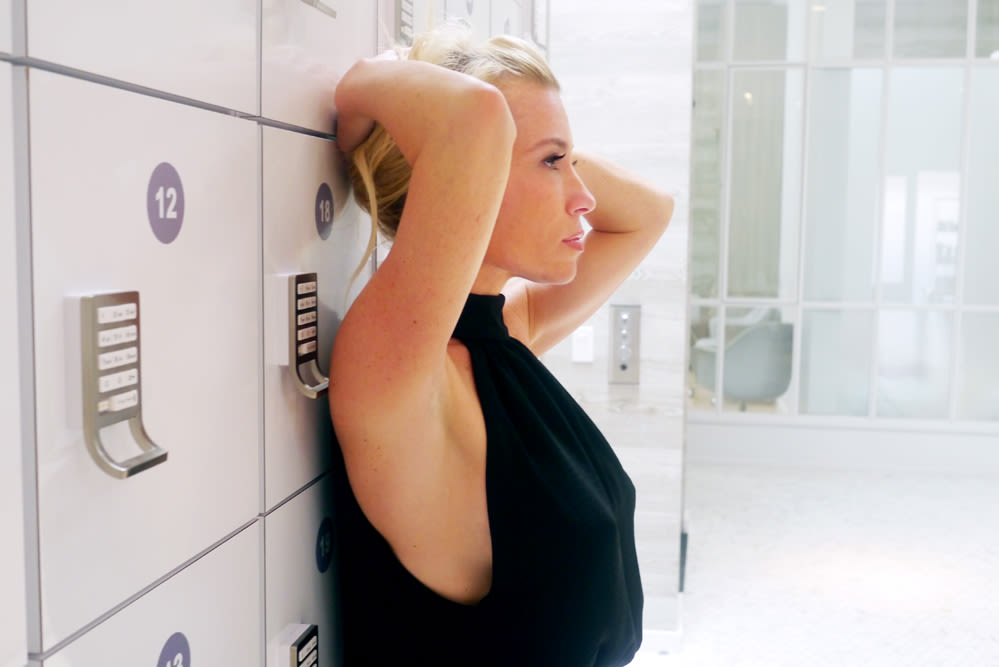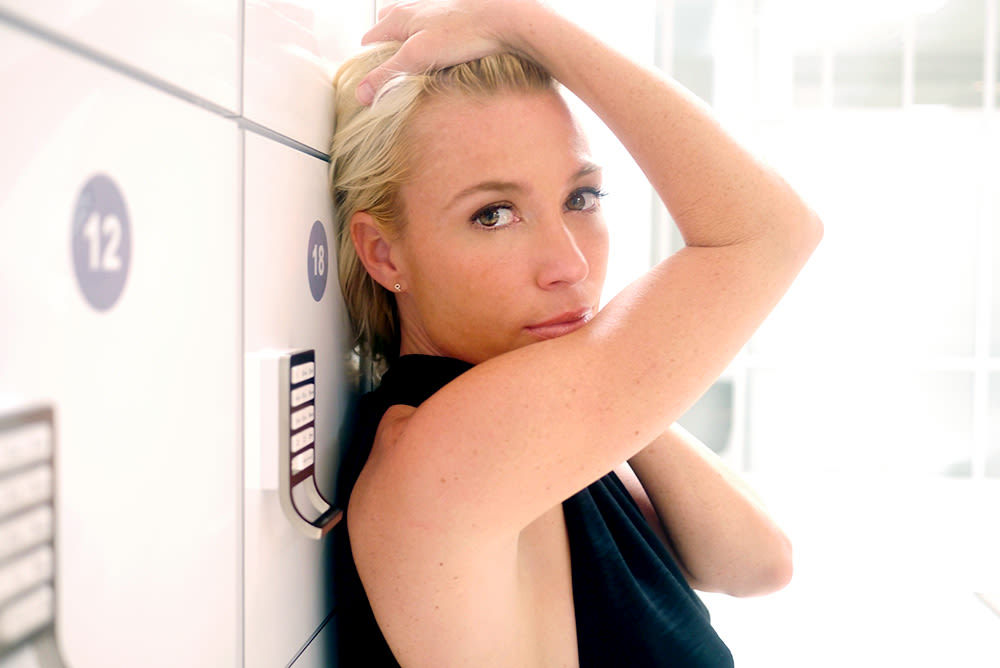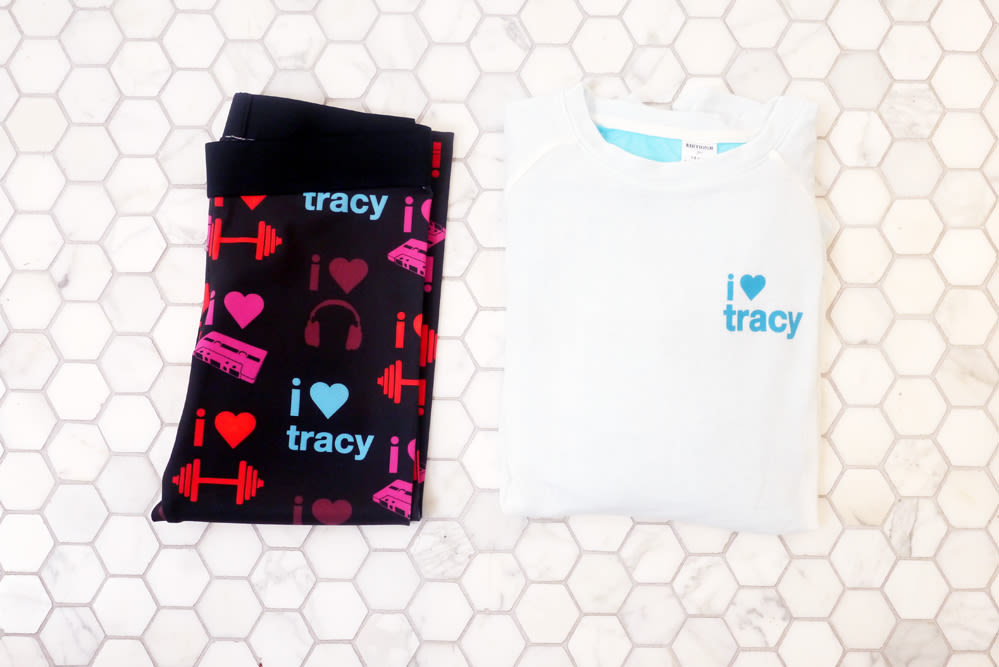'I grew up as a dancer in Indiana. My mother was a ballerina and she worked three jobs to put me through dance school. I left Indiana to study at the American Musical and Dramatic Academy in New York City on a dance scholarship; I went to school with Jason Mraz and Jesse Tyler Ferguson. Originally, I wanted to be a dancer and go to Julliard, but I’m only five feet tall and I was not built like I am now. By dancers' standards I was fat; by normal standards I was a little chubby—I gained 35 pounds when I turned 19, even though I was dancing all day. I learned very early that you can move all day and still not have the body that you want.
Because of my body, I wasn’t being taken seriously as a dancer. This was around the time that Disney came to Broadway, so the people at my school were very much like, ‘Maybe Tracy you can play the teapot in Beauty and the Beast.’ That’s not what I wanted to hear. I felt like I was failing my mother who was working so hard. I’ll never forget the time where I thought, ‘OK, well, I’m going to start smoking.’ I bought a pack of Marlboro Ultra Lights and smoked one for maybe two blocks like a complete nerd. I coughed so much before I was like, ‘No, you know what? I’m not going to smoke. That’s just not who I am, and that doesn’t feel good to me.’ That was the one and only time I ever smoked. [Laughs] I never got into drugs and I had what I would consider a normal relationship with food. I’ve always been very cautious with my health, so I was afraid to not eat a normal amount of food, especially as much as I was dancing. Mind you, I was eating maybe one bowl of Special K in the morning, mustard and tomato on a bagel for lunch, and maybe chicken and broccoli for dinner, and one brownie. I wasn’t eating a bunch of food... My mustard and tomato bagel was the one thing I had every day. All these years that I’ve owned my body being tiny and how I wanted to be, I still can’t look at a mustard and tomato bagel. I think if I eat that bagel, I’m gonna gain 30 pounds. I will eat a pizza, cupcakes, and cakes—I’ll eat four cupcakes—but I cannot look at that combination of tomato and mustard on a bagel.
Anyway, that was kind of a sign that I was not driven to be a famous dancer—I had limits to what I was willing to do to my body. Instead, I decided to over-exercise, which, in retrospect, was just as unhealthy. I took Pilates lessons, which my mother loaned me money to pay for, but it did nothing for me except make my rib cage expand more, which is exactly what Joseph Pilates was trying to do with his work, actually. I also went to Crunch, when Crunch was really popular. I did so much step aerobics that I looked like I was shoved in a trash compactor and spit out like a Garbage Pail Kid in my black leotard and tights. I’m not kidding. My muscles changed, but the weight didn’t go anywhere.
I auditioned for a basketball movie called Blue Chips, where I met my son’s father, Eric [Anderson]. He played for the New York Knicks. After we got married, Eric had to go to Puerto Rico for a summer league to rehab his back injuries. There were always doctors around for the professional athletes, and one, in particular, became the diamond in the rough of my life. He was kind of my defining moment. He had done a whole movement-based body of work on how to create balance when there’s imbalance in the body, to create a body that performs better, and not just overdevelop muscles that don’t work properly, the way traditional forms of fitness lean.
I spent a lot of time around this doctor, but he was only focused on the lower-back for these athletes. He could make a change, but he couldn’t sustain the improvement, because he couldn’t create enough movements to maintain it. So I said, ‘Well, I’m really good at movements. Let me try and help you out,’ because I was thinking, ‘If you can do this with the back, can you do it with the whole body?’ Nobody else had even looked in this direction for fitness, and that’s when I decided to create a fitness method.
It took me probably four years of research before I ever considered telling anyone, ‘I want to try my method on you.’ It’s not something I could go to school for; it was new. I started by analyzing how people at the top of their field all look the same—jockeys, swimmers, Baryshnikov, whoever. If you can make your body freakishly large, why can’t you make your body freakishly proportional? No one was was focusing on that.
I started experimenting on myself, taking pictures and noticing how my shape changed. I started to get good at what kinds of movements worked. Now I work on making people their most proportioned self, but at the time I was told that I had to pick one ideal body for everyone to look like. I started with women, asking myself, ‘Can I take any woman from any genetic background and turn them into one thing?’ I had to think: whose butt do I think everybody wants? And before Gisele was even a household name, I cut her butt out of a Victoria’s Secret catalogue, and I was like, ‘I think every woman wants that butt.’ And then I went through magazines and things, trying to find examples for the rest of the body, thinking, 'These arms look too bulky. These arms look too scrawny and lifeless. I feel like women want this leg, women don’t really want a six pack on their abs, but they want their stomachs to curve in and then curve out.’ I literally had to work out what I thought every woman wanted. But the only piece that I took from an actual person was Gisele’s butt. I laugh about it now, but everybody still wants that butt. She’s pretty timeless.
Eric and I built a really big fitness facility in Indiana for families, where I started testing my method on the moms. Right off the bat, it really started transforming lives—they all changed like the Stepford Wives, and people only wanted me and Eric to teach them or their kids. When you build a YMCA, you can’t have only two teachers. It’s not scalable. We learned a horrific lesson, and bankrupted ourselves with the place in our early 20s. By some miracle, I found another small space, and was able to continue to feed my son.
I was making up nine to thirteen different exercises for 150 different women that changed every ten days. No one did the same movement twice, because we woke up the small muscles, and to make any change with the large ones, you have to keep challenging them with different kinds of movements. They get strong fast, smart fast, and stupid fast. When I think about it now my brain just gets exhausted—I can't believe I did all of that. But this is what I’m supposed to do in life, period. I want to give every person that attention.
I had no intention of ever taking it out of Indiana, but one of my clients suggested that I open a studio in L.A. That was a tough decision for me because we had to involve investors. But, after opening in California, I had a line around my block within weeks. It was crazy. That was around seven years ago. The first person to come to me saw results faster than she’d seen results with anything else, and these women were savvy. I was written about and it was like, forget about it from there.
I've worked with celebrities, and with Madonna for a long time. I met Gwyneth Paltrow through a friend of hers who was really changing with the method. Gwyneth was like, ‘What are you doing? Are you having surgery?’ And she was like, ‘No, it’s this girl.’ I agreed to meet with Gwyneth, and she said, ‘I’ve got this movie coming up where I have to be a superhero.’ It was the very first Iron Man. She said, ‘I know you have a son—I just had Moses—and I can’t get this weight off. I’ve never had a problem like this in my life.’ She had 35 extra pounds on her. Her butt was long and she had outer thigh problems. Gwyneth is lucky because she’s really tall, so she can hide it really well in clothes, but she had significant problem areas. I felt so badly for her, and thought I could really help. So, I agreed, and she did everything that I asked. Now, seven years later, she looks younger every year; she’s totally transformed. And she really does the work. She and I became business partners, too, because she said, ‘Every woman has to have this. It’s not fair. I’ve tried everything and nothing works like this. You’re a real gift.’ It wasn’t a business decision for her at all.
Now, what I do is make sure to protect my intention for why I’m doing what I’m doing, and maintain focus on authenticity. I really believe that the second you let go of that for a price tag or something, you’re screwed. So I’ve held onto the method with a really tight hug.”
—as told to ITG
Tracy Anderson photographed by Emily Weiss in Los Angeles on July 2, 2013. Check out the Edition01 for Tracy Anderson line here.
















